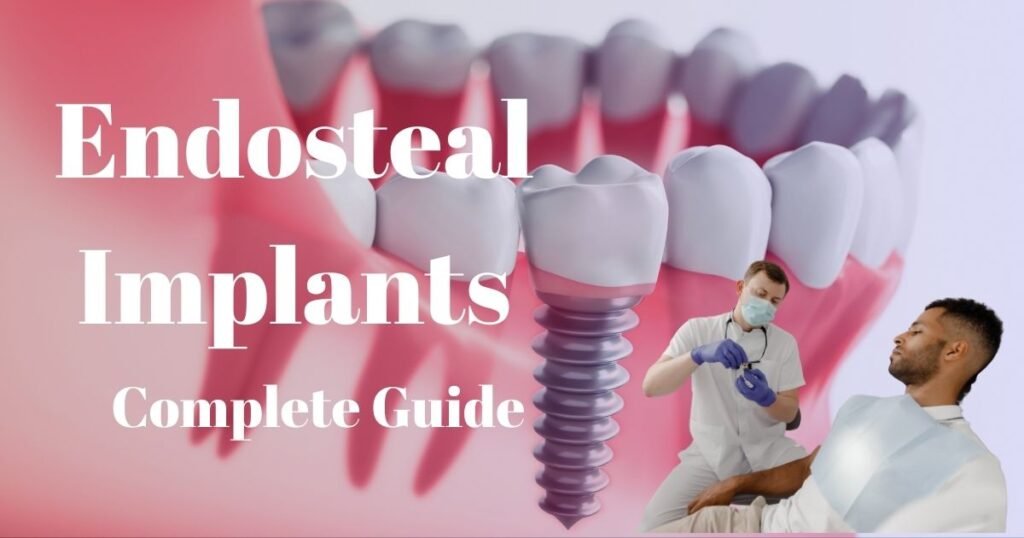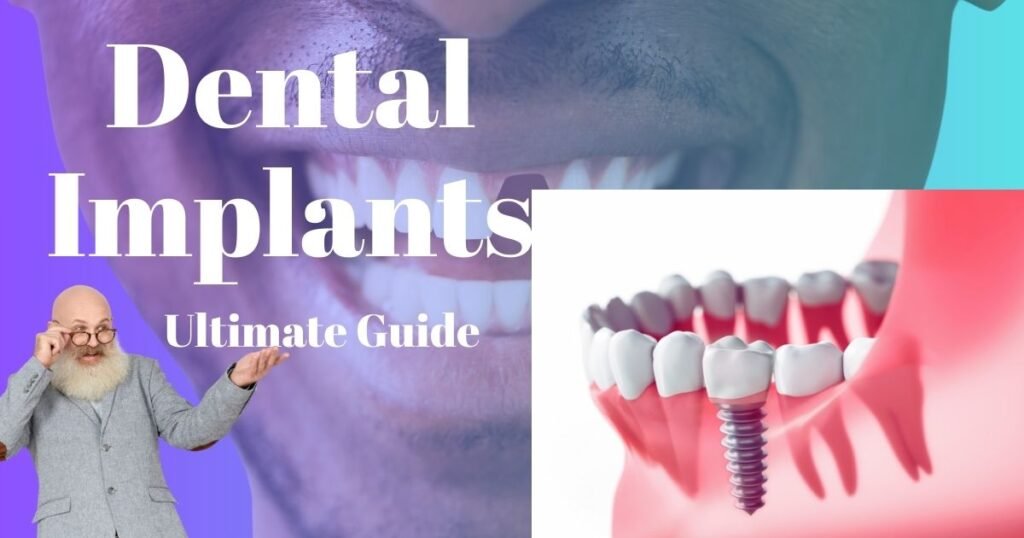Introduction
Bone grafting is often required before dental implants when a patient lacks sufficient jawbone density to support an implant. However, one of the most common concerns among patients is the amount of time they must wait between a bone graft and a dental implant procedure. The healing process varies depending on several factors, including the type of graft, the patient’s overall health, and the extent of bone loss. Understanding these factors will help patients and dental professionals determine the best timeline for successful implant placement and to know the maximum time between bone graft and dental implant that can be tolerated.
What Is Bone Grafting?
Bone grafting is a surgical procedure that involves adding bone material to the jaw to increase its volume and strength. This is crucial for patients who have experienced bone loss due to tooth extraction, gum disease, or other dental conditions. The procedure ensures the jawbone is strong enough to hold a dental implant securely.
Types of Bone Grafts and Their Healing Times
The type of bone graft used plays a significant role in determining how long a patient must wait before receiving a dental implant. The most common types of bone grafts include:
- Autograft: Bone is taken from the patient’s own body, typically from the chin, hip, or tibia.
- Healing time: 4-6 months
- Allograft: Bone from a human donor (cadaver bone) is processed and used.
- Healing time: 4-6 months
- Xenograft: Bone from an animal source (typically bovine or porcine bone) is used.
- Healing time: 6-9 months
- Alloplastic Graft: Synthetic materials such as hydroxyapatite or calcium phosphate are used to stimulate bone growth.
- Healing time: 6-12 months
Factors That Affect the Waiting Period Between Bone Graft and Implant Placement
The time required between a bone graft and a dental implant varies depending on multiple factors:
1. The Extent of Bone Loss
If only a minor bone graft is required, the healing period is shorter (3-4 months). However, if significant bone loss has occurred, healing may take up to a year.
2. The Patient’s Overall Health
Health conditions such as diabetes, osteoporosis, or immune disorders can slow the healing process, requiring an extended waiting period before implant placement.
3. The Type of Bone Graft Used
As mentioned earlier, some grafts take longer to integrate with the natural bone. Autografts tend to heal faster than xenografts or alloplastic grafts.
4. Use of Growth Factors or PRP (Platelet-Rich Plasma)
Growth factors, such as PRP or bone morphogenetic proteins, can speed up healing and shorten the waiting period.
5. Smoking and Lifestyle Factors
Smoking, alcohol consumption, and poor nutrition can significantly delay bone graft healing. Patients who smoke are often advised to quit before undergoing implant procedures.
6. Surgeon’s Assessment and CBCT Scans
A dental surgeon will use Cone Beam Computed Tomography (CBCT) scans to evaluate bone density and healing progress before proceeding with an implant.
The maximum time between bone graft and dental implant plays a crucial role in the success of the treatment. This timeline is essential for ensuring that the bone graft integrates properly and that the dental implant can be placed successfully.
Typical Timeframes Between Bone Graft and Implant Placement
Below are the general guidelines for the time required before a dental implant can be placed:
- Small Bone Graft (Socket Preservation): 3-4 months
- Moderate Bone Graft (Ridge Augmentation): 4-6 months
- Large Bone Graft (Major Reconstructive Surgery): 6-12 months
However, in some cases, a simultaneous bone graft and implant placement can be performed, reducing the overall treatment time. This is only possible when minor grafting is needed.
Can You Wait Too Long After a Bone Graft to Get an Implant?
Yes, if too much time passes between the bone graft and implant placement, the grafted bone may begin to resorb. Bone resorption occurs naturally when the area is not stimulated by an implant or a natural tooth. If this happens, another bone graft may be required before the implant can be placed.
Early vs. Delayed Implant Placement: Pros and Cons
Early Implant Placement (Within 3-6 Months)
Pros:
- Shorter overall treatment time
- Reduces the chance of bone resorption
- Less risk of requiring an additional graft
Cons:
- Higher risk of implant failure if the graft hasn’t fully healed
- May require additional stability techniques (such as membranes or screws)
Delayed Implant Placement (After 6-12 Months)
Pros:
- Ensures full integration of the bone graft
- Higher implant success rate
- Stronger foundation for long-term durability
It is important to consider the maximum time between bone graft and dental implant during consultations with your dental surgeon to address any concerns or questions.
Cons:
- Extended treatment timeline
- Possibility of bone resorption requiring another graft
How to Ensure a Successful Outcome
Patients can improve the success of their bone graft and implant procedure by following these guidelines:
Understanding the maximum time between bone graft and dental implant helps in making informed decisions about the timing of your procedures.
- Follow Post-Surgical Care Instructions: Avoid disturbing the grafted area, follow medication guidelines, and maintain proper oral hygiene.
- Eat a Bone-Healthy Diet: Consume foods rich in calcium, vitamin D, and protein to support bone healing.
- Avoid Smoking and Alcohol: Both can delay healing and increase the risk of implant failure.
- Attend Regular Dental Checkups: Your dentist will monitor healing progress and determine the right time for implant placement.
- Consider PRP Therapy: Discuss with your dentist whether platelet-rich plasma can help accelerate healing.
Conclusion
The maximum time between a bone graft and a dental implant depends on multiple factors, including the type of graft, the patient’s health, and the extent of bone loss. While most patients receive their implants within 3 to 9 months, delaying implant placement too long can result in bone resorption, potentially requiring additional grafting. Working closely with an experienced dental surgeon and following proper post-operative care can ensure the best possible outcome for your dental implant procedure.
15 detailed FAQs on the topic Maximum Time Between Bone Graft and Dental Implant.
What is the ideal waiting period between a bone graft and dental implant?
The waiting period varies based on the type and extent of the bone graft. In most cases, it ranges from 3 to 9 months. Small bone grafts may heal within 3-4 months, while larger grafts or those requiring major bone augmentation may take 6-12 months for full integration.
Can a dental implant be placed immediately after a bone graft?
Yes, in some cases, an immediate implant placement is possible if the bone graft is minor and stable enough to support the implant. However, in cases of significant bone loss, the graft must heal completely before implant placement, which can take several months.
What happens if I wait too long after a bone graft to get an implant?
If too much time passes after a bone graft without placing an implant, the grafted bone may begin to resorb (shrink) due to a lack of stimulation. This can lead to a weaker bone structure, potentially requiring another graft before an implant can be placed.
What factors influence the healing time of a bone graft?
Several factors affect the healing process, including:
The type of bone graft (autograft, allograft, xenograft, or synthetic)
The patient’s overall health (diabetes, osteoporosis, immune conditions)
Lifestyle habits (smoking, alcohol use, and nutrition)
Use of growth factors like PRP (Platelet-Rich Plasma)
The location and size of the grafted areaHow do I know when my bone graft is ready for an implant?
Your dentist or oral surgeon will monitor healing through X-rays or CBCT scans to assess bone density and integration. If the graft has successfully fused with the jawbone, they will clear you for implant placement.
Can a failed bone graft delay my implant procedure?
Yes, if the bone graft fails to integrate properly, the implant procedure may be delayed. In such cases, a second bone graft may be necessary, extending the overall treatment time by several months.
Are there ways to speed up the healing process after a bone graft?
Yes, you can promote faster healing by:
Following post-surgical care instructions (e.g., avoiding pressure on the graft site)
Eating a bone-healthy diet rich in calcium, vitamin D, and protein
Avoiding smoking and alcohol as they slow down bone regeneration
Considering PRP therapy to accelerate bone growthCan I get an implant if I have a history of severe bone loss?
Yes, but it may require multiple bone graft procedures or alternative techniques like zygomatic implants, which bypass the jawbone and anchor into the cheekbone. Your dentist will evaluate your case to determine the best approach.
Does the type of bone graft affect how long I must wait for an implant?
Yes, the type of bone graft significantly impacts the healing time:
Autografts (patient’s own bone) heal in 4-6 months
Allografts (donor bone) take 4-6 months
Xenografts (animal bone) may require 6-9 months
Synthetic grafts (alloplastic) often take 6-12 monthsWhat happens if I don’t get a dental implant after a bone graft?
If an implant is not placed within a reasonable time after a bone graft, the bone may resorb, leading to a weaker jaw structure. This could necessitate another bone graft in the future, increasing cost and treatment time.
Can I get a temporary tooth while waiting for my implant?
Yes, in most cases, patients can wear a temporary prosthetic tooth, such as a flipper, partial denture, or temporary bridge, to maintain aesthetics and function during the healing period.
What are the risks of delaying an implant after a bone graft?
Delaying too long can lead to:Bone resorption (loss of grafted bone)
Shifting of adjacent teeth into the gap
Gum tissue overgrowth in the implant site
More complex surgery if additional grafting is needed laterAre some patients more likely to need a longer healing period?
Yes, patients with certain health conditions like diabetes, osteoporosis, or autoimmune diseases may require an extended healing period before implant placement. Additionally, smokers and older patients may also experience slower bone integration.
How do I maintain my bone graft while waiting for the implant?
To ensure successful integration of the bone graft:
Follow a soft-food diet to avoid pressure on the graft site
Maintain excellent oral hygiene to prevent infection
Avoid smoking and alcohol to support bone healing
Follow up with your dentist regularly for check-ups and imagingCan I reduce the time between a bone graft and implant placement?
In some cases, using advanced bone grafting materials, growth factors, or simultaneous implant and bone graft placement can shorten the waiting time. However, this decision depends on the patient’s bone quality and the complexity of the case.
By adhering to the recommended maximum time between bone graft and dental implant, patients can enhance the effectiveness of their treatment.
Many patients are concerned about the maximum time between bone graft and dental implant and how this could affect their treatment outcomes.
Patients should also be informed about the potential risks of extending the maximum time between bone graft and dental implant.
Discussing the maximum time between bone graft and dental implant during your consultation can provide clarity on your specific treatment plan.
Many factors influence the maximum time between bone graft and dental implant, and it is essential to consider them all during treatment planning.
In conclusion, understanding the maximum time between bone graft and dental implant can lead to better treatment outcomes and satisfaction.
For optimal results, adhere to the maximum time between bone graft and dental implant as advised by your dental care team.
It is advisable to keep the maximum time between bone graft and dental implant in mind when scheduling follow-up appointments.
Educational resources about the maximum time between bone graft and dental implant can provide valuable insights for patients.
It is critical to understand the maximum time between bone graft and dental implant to ensure a successful recovery.
Patients should be aware of the maximum time between bone graft and dental implant to optimize their dental health journey.
Following the maximum time between bone graft and dental implant guidelines will help prevent complications.
Discuss the maximum time between bone graft and dental implant with your dentist for personalized advice.
Each patient’s case is unique, and understanding the maximum time between bone graft and dental implant is essential for tailored care.
Being informed about the maximum time between bone graft and dental implant is a vital aspect of pre-operative care.
Awareness of the maximum time between bone graft and dental implant can lead to a more satisfactory treatment experience.
Understanding the maximum time between bone graft and dental implant is crucial for optimal healing.
Patients should take the maximum time between bone graft and dental implant seriously to prevent issues.
Informed decisions about the maximum time between bone graft and dental implant can enhance patient outcomes.
To sum up, knowing the maximum time between bone graft and dental implant is key to successful dental care.
Keep in mind the maximum time between bone graft and dental implant for effective treatment planning.
Consulting about the maximum time between bone graft and dental implant is essential for patient safety.
Prioritize understanding the maximum time between bone graft and dental implant for successful outcomes.
In summary, the maximum time between bone graft and dental implant is crucial for ensuring optimal results.
Be proactive about the maximum time between bone graft and dental implant for the best treatment experience.
Patients are encouraged to learn about the maximum time between bone graft and dental implant to facilitate healing.

Dr. Niraj Ghanghoriya is a passionate dental surgeon with over 12 years of experience in clinical dentistry. He completed his BDS from the prestigious Sri Aurobindo Institute of Dentistry in 2012 and specializes in painless root canals, smile makeovers, and preventive oral care. Known for his patient-first approach and clear communication, Dr. Ghanghoriya aims to make dental knowledge accessible to everyone. When he’s not in the clinic, he enjoys writing informative dental blogs to help people take better care of their oral health.




